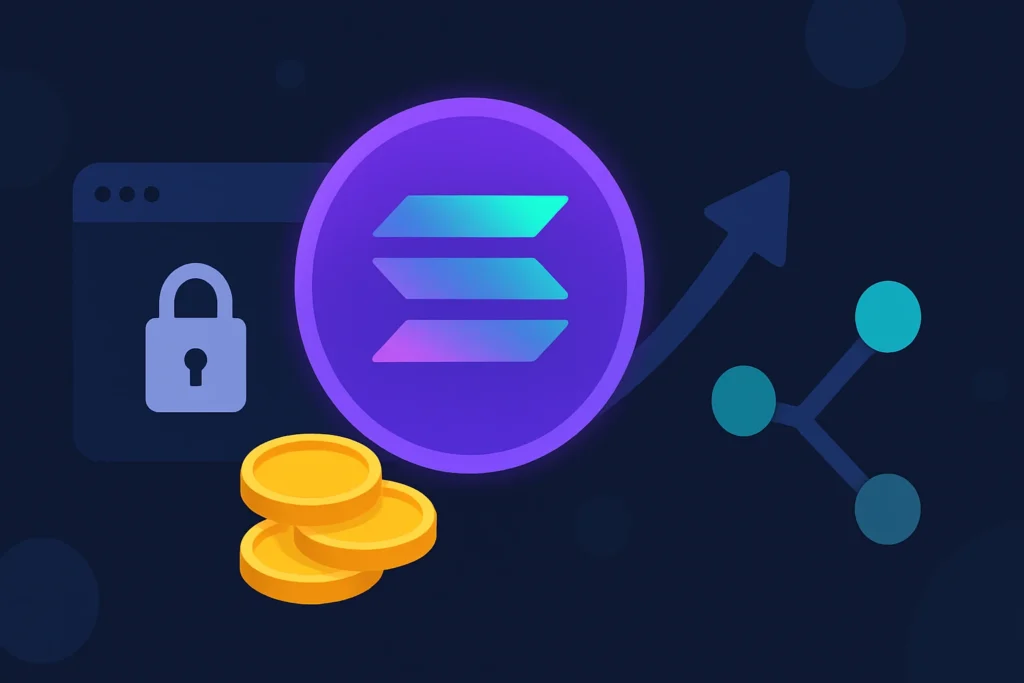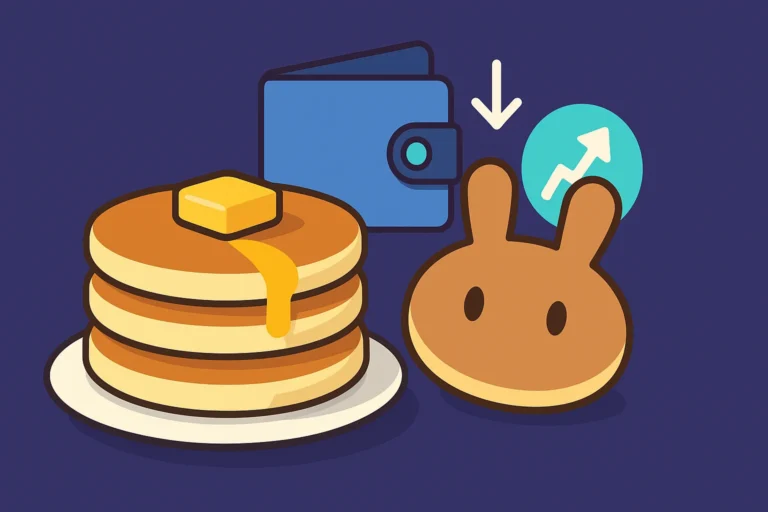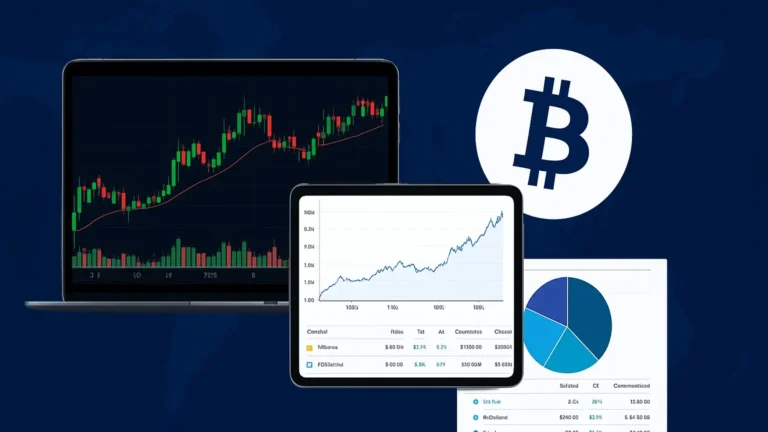How to Stake Solana for Rewards

How to Stake Solana for Rewards: Solana (SOL) has quickly become one of the most prominent blockchain networks thanks to its lightning-fast transactions and low fees. But holding SOL in your wallet isn’t the only way to benefit, you can also stake it to earn rewards.
What Is Staking?
Staking is the process of locking up your SOL tokens to support the network’s security and operations. In return, you earn rewards, typically paid out in SOL.
Unlike mining, staking doesn’t require powerful computers or electricity; instead, you delegate your tokens to a validator, who helps maintain the network on your behalf.
Why Stake SOL?
We need to know why stake sol before know how to stake solana for rewards.
- Earn passive income – Get up to 6–8% APY.
- Support network security – Your stake helps decentralize Solana.
- Non-custodial control – You maintain ownership of your tokens.
Staking becomes active after one full epoch (2–3 days). Once active, you start earning rewards automatically, usually every epoch.
What You Need To Stake Solana
1) Solana Wallet
Before you can stake your SOL, you will need a wallet that supports staking and allows you to delegate your tokens to a validator.
Not all crypto wallets are created equal, especially when it comes to staking functionality. The most popular choices for staking Solana include Phantom, Solflare, and Ledger (via Solana-compatible interfaces).
A good staking wallet should be:
- Non-custodial: You control your private keys, not a third party.
- User-friendly: Simple UI to navigate staking and reward management.
- Secure: Strong encryption, optional hardware integration, and backup features.
- Staking-ready: Built-in support for choosing validators, delegating, and monitoring rewards.
Take Phantom, for example, it is a browser extension and mobile app that’s built specifically for the Solana ecosystem. Within a few clicks, you can delegate your SOL, view live rewards, and even re stake them.
Solflare offers similar features but with additional support for hardware wallets like Ledger.
Avoid storing your SOL on centralized exchanges if your goal is full staking control. While platforms like Binance allow staking, they manage everything internally, you won’t have a say in validator selection or direct access to staking details.
2) SOL tokens
You can’t stake what you don’t own, right? To stake Solana, you’ll need to purchase SOL tokens and transfer them to your wallet. SOL is widely available on most major crypto exchanges, including:
- Binance
- Coinbase
- Kraken
- KuCoin
- Bitfinex
Here’s a quick breakdown of the buying process:
- Register and verify your account on a reputable exchange.
- Deposit funds using bank transfer, debit and credit card, or crypto.
- Buy SOL in the trading section.
- Withdraw SOL to your staking wallet using the correct Solana address (always double-check this).
Make sure you leave a small amount of SOL in your wallet to cover transaction fees when staking or unstaking. Solana’s fees are dirt cheap, usually a fraction of a cent, but your wallet needs to have enough to cover network activity.
Once the SOL lands in your wallet, you are ready to stake. But before diving in, there are some important pre-staking considerations to keep in mind.
3) Factors to Consider Before Staking
Staking may sound like a no-brainer, but there are several things to think about before committing your SOL:
- Validator Reputation: Don’t just pick a validator randomly. Look for consistent uptime, low commission rates, and a solid track record. Validators with poor performance can hurt your returns.
- Commission Fees: Each validator charges a fee, typically between 5% to 10%, which they deduct from your rewards. Higher isn’t always better if they offer better performance or extra features, but weigh the cost carefully.
- Lock-Up Periods: Technically, Solana doesn’t enforce a strict lock-up when staking, but undelegating your SOL puts it into a “cooldown” or deactivation phase that lasts about 2 epochs (~2 to 4 days). You won’t earn rewards during this period, and you can’t transfer your SOL until it completes.
- Minimum Stake Amounts: While there are no hard minimum enforced by the Solana protocol, some validators may set a lower threshold. In most cases, you can start staking with just 0.01 SOL or less.
- Security: Never share your private key or recovery phrase. Only use official wallet apps and double-check websites for phishing. This is your money we’re talking about.
- Reward Frequency: Solana rewards are paid out automatically every epoch (roughly 2 to 3 days). However, not all validators distribute rewards on the same schedule, so be sure to check.
Staking is safe when done correctly, but it is your responsibility to research, choose wisely, and manage your assets securely. Treat it like investing in a stock, you would not throw money at a company without understanding its business, right?
Step-by-Step Guide How to Stake Solana for Rewards
1) Setting Up Your Wallet
Let’s say you picked Phantom Wallet. Here is how you get set up for staking:
- Download and install Phantom from the official site (https://phantom.app). Choose either the browser extension or mobile app.
- Create a new wallet and safely store your recovery phrase. This is your key to accessing your wallet if you ever lose your device.
- Fund your wallet by withdrawing SOL from your exchange to your Phantom address.
- Wait a few minutes for the SOL to appear in your wallet.
Other wallets like Solflare and Ledger work similarly. Just be sure to follow official instructions and double-check URLs to avoid scams.
Once your wallet is set up and loaded with SOL, you’re ready to start staking.
2) Choosing a Validator
This is one of the most crucial steps. Validators are the engines of the Solana network, and your rewards depend on how well they perform.
To choose a validator:
- Open your wallet’s staking interface (in Phantom, click “SOL” – “Start Earning”).
- Browse through the validator list. You’ll see:
- Validator name or node identity
- Commission rate
- Total SOL delegated
- Uptime or performance stats
- Look for validators with:
- Low commission (0% to 10%)
- High uptime (close to 100%)
- Transparent reputation (some have public websites or Twitter)
Avoid picking one of the top validators by stake, they may already have too much influence over the network. Instead, consider a mid-tier validator with solid metrics to help decentralize the ecosystem.
3) Delegating Your SOL
Once you’ve chosen a validator:
- Click “Delegate” in your wallet interface.
- Enter the amount of SOL you want to stake.
- Confirm the transaction and approve it with your wallet.
Your tokens are now staked! You will start earning rewards at the beginning of the next epoch, which usually takes 2-3 days. You can always check your staking status, balance, and rewards right from your wallet.
Remember, you retain full control of your SOL. If you ever want to stop staking, simply undelegate, wait for the cooldown to finish, and your SOL becomes liquid again.
4) Monitoring Your Stake and Rewards
The final step is tracking your progress. Most wallets show:
- Your current staked amount
- Validator info
- Current and pending rewards
- Option to re-stake (compound) or withdraw
Set a reminder to check in every few days or weekly. If your validator starts underperforming or raises fees, you might consider redelegating to a better one. Staying informed helps maximize your returns over time.
Learn– How to stake cardano
Best Wallets and Platforms for Solana Staking
Phantom Wallet
If you’re staking Solana, Phantom Wallet is a fan favorite for a reason. It is sleek, easy to use, and built specifically for the Solana ecosystem. Think of it as the “MetaMask of Solana” but with a more polished user experience tailored to both beginners and pros.
Key features that make Phantom stand out for staking:
- Built-in Staking Interface: You can stake SOL directly from the app. No need to visit any third-party platforms.
- Validator Selection: Easily browse through a list of validators, see their fees, and monitor their performance before delegating.
- Reward Tracking: Your staking rewards are displayed right in your wallet. They update automatically after every epoch.
- Speed and Simplicity: Delegating or undelegating takes just a few clicks and is completed within seconds.
- Security First: As a non-custodial wallet, Phantom ensures you control your private keys. It also supports biometric login and recovery phrase backup.
Pro tip: Always leave a tiny amount of SOL in your wallet for transaction fees Phantom will usually remind you, but it’s something to be aware of.
Phantom is available as a browser extension (Chrome, Firefox, Edge, Brave) and mobile app (iOS and Android). Just make sure you’re downloading it from the official site or verified app stores.
Solflare Wallet
If you want more advanced staking tools, Solflare might be your go-to. It is also Solana-native but supports both software and hardware wallets (like Ledger), giving you flexibility in how you store your funds.
Why people love Solflare for staking:
- Detailed Validator Analytics: You can see validator uptime, commissions, performance trends, and even compare them side-by-side.
- Supports Ledger: If you want cold wallet security with staking convenience, Solflare makes it possible.
- Mobile and Web Access: You can use Solflare as a web app, browser extension, or mobile app.
- Multiple Delegations: Unlike Phantom, Solflare supports staking your SOL with multiple validators from one wallet.
Solflare appeals to users who want more control and data when staking. The platform does a great job of educating users as well, offering a built-in FAQ and staking tutorials.
One thing to watch out for, Solflare’s interface is a bit more complex than Phantom’s. But if you’re staking large amounts or want granular control, the trade-off is worth it.
Binance and Other Exchanges
For those who prefer simplicity and don’t mind custodial staking, centralized exchanges like Binance, Kraken, and Coinbase offer Solana staking as a service. These platforms remove all the manual steps, you simply hold SOL on the platform and opt into staking.
Benefits of exchange staking:
- No Wallet Setup: You don’t need to manage private keys or install anything.
- Instant Access: Just click “Stake” or “Earn” in your portfolio.
- Auto-Compounding: Many exchanges automatically re-stake your rewards.
- Stable Returns: Exchanges usually show fixed or average APYs.
But here’s the catch:
- You don’t control your private keys, if the exchange gets hacked or goes under, your assets are at risk.
- You can’t choose your validator. The exchange handles it all internally, which means less decentralization and transparency.
- Rewards may be slightly lower due to higher fees or internal distribution rules.
Exchanges are great for beginners or those who want a “set it and forget it” approach. But if you’re serious about staking and want full control, self-custody wallets like Phantom or Solflare are the way to go.
Risks and Considerations When Staking Solana
Slashing and Validator Downtime
One of the biggest concerns people have when staking is the risk of slashing, that is, losing a portion of your staked tokens if your validator misbehaves.
Good news: Solana does not currently implement slashing for delegators. That means even if your validator goes rogue or performs poorly, your staked SOL remains safe. However, poor validator performance can still impact your rewards.
Here’s what can go wrong:
- Downtime: If your validator is offline or misses blocks, they earn fewer rewards, which means you do, too.
- Misconfiguration: Badly set up validators can hurt performance and earnings.
- Reputation Damage: Delegating to a validator with a shady track record can undermine your staking strategy.
Before choosing a validator, always check their performance stats. Platforms like Solana Beach, Solscan, and your wallet’s validator dashboard offer this info. Spread your stake if you are unsure, some wallets allow delegation to multiple validators to reduce risk.
Lock-up Periods and Liquidity
While Solana doesn’t enforce strict lock-up periods like Ethereum 2.0, it does have a deactivation period when you unstake.
Here’s how it works:
- You click “undelegate” or “deactivate stake.”
- Your SOL enters a cooldown phase, this takes roughly 2 epochs (48-72 hours).
- After the cooldown, your SOL becomes available in your wallet for use.
During this time, you won’t earn staking rewards, and you can’t move or sell your SOL. It’s not a huge drawback, but it’s something to plan around, especially if you anticipate needing your funds soon.
Some platforms offer liquid staking solutions, allowing you to stake your SOL and still use it elsewhere via synthetic tokens (like Marinade’s mSOL). These solutions come with their own risks, but they’re an option if you need flexibility.
Network and Smart Contract Risks
Even though staking is considered low-risk, no system is foolproof. Here are a few additional risks to be aware of:
- Smart Contract Bugs: If you’re using DeFi protocols or liquid staking platforms, vulnerabilities in their code could impact your assets.
- Wallet Exploits: Phishing attacks and browser-based exploits can compromise your wallet. Always use secure devices and avoid clicking suspicious links.
- Protocol-Level Issues: While rare, bugs or vulnerabilities in the Solana network could cause downtime or unexpected behavior.
The best defense? Use reputable tools, double-check transactions, and stay informed. If you are not sure about a staking platform or validator, research thoroughly before proceeding.
Maximizing Your Solana Staking Rewards
Choosing High-Performance Validators
If you want to squeeze the most out of your SOL staking, one of the easiest and most impactful decisions is choosing the right validator. While it might be tempting to stake with the top validator or the one with zero commission, that’s not always the smartest move.
Here’s what you should look for:
- High Uptime: The best validators have near-100% uptime. This means they’re consistently active, validating blocks, and maximizing rewards.
- Low Missed Blocks: Frequent missed blocks = lower rewards.
- Fair Commission Rate: A lower commission means more of the pie for you. But if it’s too low (like 0%), ask yourself how sustainable that validator is.
- Stake Distribution: Avoid validators that are overly saturated with delegations. Supporting mid-level validators promotes decentralization and often comes with better rewards.
Use platforms like validators.app, Solana Beach, or Solscan to compare validators by performance, commission, and voting power.
Extra tip: Spread your SOL across multiple validators. This diversifies your risk and supports decentralization.
Understanding Fee Structures
When you stake SOL, your validator takes a small cut of the rewards as a commission. This fee funds their operations after all, running a reliable node 24/7 isn’t cheap. But you don’t want to lose too much to fees.
Typical commission rates range from 0% to 10%, but some outliers exist. Here’s how to think about it:
- 0% Commission: Sounds good, right? But these are often unsustainable in the long run. Validators may raise fees suddenly or lack the resources for consistent performance.
- 5% Commission: A solid middle ground. Most reliable validators fall into this range.
- 10%+ Commission: Only worth it if the validator offers exceptionally high uptime and reliability.
Also check how often rewards are distributed some validators compound automatically, while others require manual claiming or re-staking.
Choosing a validator isn’t just about fee percentages it is about performance vs. cost. Don’t chase the lowest fee blindly. Sometimes a higher fee validator with better performance earns you more in the long run.
Re-Staking and Compounding Rewards
Compounding rewards is the magic behind long-term staking gains. Instead of withdrawing your rewards each time, you re-stake them. Over time, your staked amount grows, and so do your rewards.
Let’s break it down with an example:
- You stake 1,000 SOL at 7% APY.
- After 1 year, you earn 70 SOL.
- Instead of cashing out, you re-stake the 70 SOL.
- The next year, you earn rewards on 1,070 SOL, and so on.
This snowball effect is powerful, especially over multiple years. Some wallets support auto-compounding, but many require you to manually re-stake rewards. It is a few extra clicks every couple of days or weeks, but the long-term payoff is worth it.
Set a reminder to re-stake your rewards once per week or after every epoch. Little habits make a big difference.
Frequently Asked Questions About Solana Staking
Is Staking Solana Safe?
Yes, staking Solana is considered relatively safe, especially when done through a reputable wallet and well-performing validator. Your tokens never leave your wallet. You are only delegating your voting power, not transferring ownership.
However, you should still:
- Use trusted wallets like Phantom or Solflare.
- Keep your recovery phrase private and secure.
- Avoid validators with poor performance or shady reputations.
Can You Lose Money Staking Solana?
Under normal circumstances, no, you won’t lose your staked SOL. But you can lose out on rewards if:
- Your validator underperforms.
- You forget to re stake or undelegate during poor validator performance.
- You stake on scammy platforms or fall for phishing attacks.
So while the principal is safe, your potential earnings can be affected by your choices.
How Often Are Rewards Paid Out?
Solana staking rewards are distributed once per epoch, which is roughly every 2-3 days. The actual timing may vary slightly depending on network conditions.
Once rewards are available:
- You can view them in your wallet.
- Choose to re-stake or claim.
- Some platforms offer auto-compounding, while others require manual action.
What Happens If I Want to Unstake My SOL?
Unstaking is easy but comes with a cooldown period of around 2 days (2 epochs). Here is how it works:
- You undelegate your SOL from the validator.
- It enters a deactivation phase.
- After the cooldown, the SOL becomes available in your wallet.
You won’t earn rewards during this time, so plan accordingly.
Can I Use Liquid Staking on Solana?
Yes! Platforms like Marinade Finance (mSOL) and Lido Finance (stSOL) offer liquid staking. These services give you a tokenized version of your staked SOL that you can use in DeFi protocols while still earning rewards.
Benefits:
- Instant liquidity.
- Extra yield through DeFi.
Risks:
- Smart contract vulnerabilities.
- Peg deviation of mSOL/stSOL vs. SOL.
Liquid staking is great for advanced users who want flexibility, but it is best to understand the risks before diving in.
Future of Staking on Solana
Upgrades and Innovations
The Solana network is constantly evolving, with regular upgrades aimed at improving speed, security, and decentralization. One such advancement is stake-weighted QoS (Quality of Service), which optimizes how validators prioritize traffic.
In addition, innovations like liquid staking and validator anonymity improvements are being explored. These upgrades will make staking more accessible, secure, and scalable for the long haul.
The developer community remains active, and the ecosystem is thriving with dApps, DeFi platforms, and NFT marketplaces all contributing to higher SOL usage and, in turn, staking opportunities.
Solana’s Role in the Future of DeFi and Web3
Solana is carving out a key role in the Web3 revolution. Its ability to process tens of thousands of transactions per second with low fees makes it ideal for DeFi, NFTs, gaming, and beyond.
As the Solana ecosystem matures, more users will stake their SOL to support network security, reduce token float, and earn passive rewards. From powering real-time blockchain games to decentralized exchanges, staking SOL ensures you benefit from the platform’s explosive growth.
Whether you’re a long-term HODLer or an active DeFi user, staking is your way to participate in, and profit from Solana’s success.
Conclusion
If you are looking for a secure and rewarding way to grow your crypto holdings, understanding how to stake Solana for rewards is a smart move. It is simple, non-custodial, and offers a steady passive income, all while supporting the network’s decentralization and performance.
With just a Solana wallet and a few SOL tokens, you’re only a few clicks away from earning staking rewards. Start today and let your crypto work for you.
Disclaimer: Always do your own research. Crypto investing carries risk. This content is educational, not financial advice.
Check tools– (1) Trading journal (2) lot size calculator
FAQs
Q1: What is the minimum amount of SOL needed to stake?
A: There’s technically no minimum, but most wallets suggest staking at least 0.01 SOL due to transaction fees and efficiency.
Q2: Can I change validators after staking?
A: Yes. You’ll need to undelegate from your current validator and wait for the cooldown before re-delegating.
Q3: Are staking rewards taxable?
A: In many jurisdictions, yes, staking rewards are considered taxable income. Check with a tax advisor in your country.
Q4: Can I lose access to my SOL if I lose my wallet?
A: Only if you lose your recovery phrase. Always store it offline and securely.
Q5: Is it better to stake through a wallet or an exchange?
A: Wallets give you more control and transparency. Exchanges are easier but more centralized and custodial.
Contents
- 1 What Is Staking?
- 2 Why Stake SOL?
- 3 What You Need To Stake Solana
- 4 Step-by-Step Guide How to Stake Solana for Rewards
- 5 Best Wallets and Platforms for Solana Staking
- 6 Why people love Solflare for staking:
- 7 Risks and Considerations When Staking Solana
- 8 Maximizing Your Solana Staking Rewards
- 9 Frequently Asked Questions About Solana Staking
- 10 Future of Staking on Solana
- 11 Conclusion







Nice